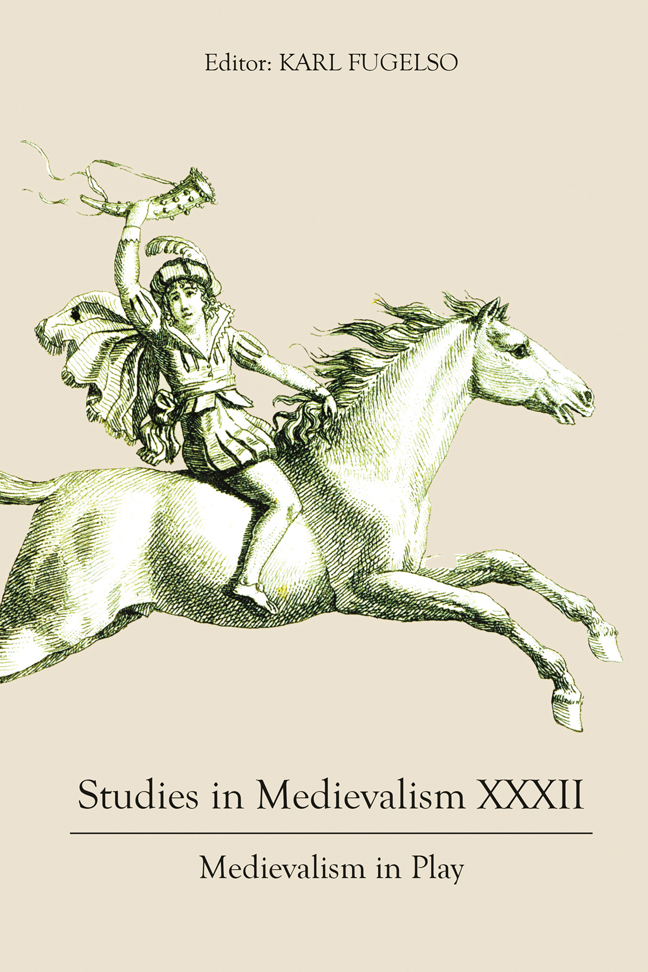“Castles are like possessions: merely temporary!”: Neomedieval Architectural Praxis in Stronghold: Crusader II
Published online by Cambridge University Press: 12 January 2024
Summary
In Firefly Studio's real-time strategy game Stronghold: Crusader II, players are tasked with creating order and wealth from an otherwise anarchical wilderness. Entrusted with Richard the Lionheart's expeditionary force, they sail to the Holy Land to prepare a beachhead for his march towards Jerusalem. Yet after rough weather and plague devastates their small flotilla, they land with only a handful of peasants and even fewer supplies. To make matters worse, players soon discover that this “strange new land” is not as uninhabited as the game's narrator, their loquacious scribe, seems to think. Despite its inhospitable climate, fierce beasts, and volatile weather, the vast majority of the game's arid landscape has been settled and fortified by Saladin's forces – forces that hold the upper hand in almost every aspect that the game counts as success: population, trade, troop strength, and martial technology. Players, however, do possess one advantage that the “infidel” does not. Privy to the secrets of Western architectural praxis, they know how to build castles. They know where to site granaries, where to establish farms and quarries, where to build barracks, hovels, workshops, taverns, churches, and everything else that, in popular accounts of the Crusades, are constructed as prerequisites to Western cultural and military dominance.
Players, as such, are ultimately able to redeem the Holy Land. Wielding a kind of architectural sovereignty, they are able to reshape and thereby conquer its spectacular topography. As David Matthews writes about St. Mary's Cathedral in Sydney, Australia, they are able “to medievalise it,” which is to say, “to colonize it.” Stronghold: Crusader II thus constructs medieval architectural praxis as a strategy of domination. As with the real-time strategy games in the aptly named Civilization and Ages of Empires franchises, Stronghold: Crusader II engages players in a fantasy of empire-building, one that justifies genocide and wholesale environmental devastation through what Dan Kline describes as the always-moral imperative of imposing economic and cultural hegemony on territories that are constructed as otherwise wild, unruly, or contested. In doing so, Stronghold Crusader II inverts one of the most enduring tenets of nineteenth-century medievalist architectural praxis: the idea that the exigencies of the present can be contained in and understood through the more permanent values of an idealized past.
- Type
- Chapter
- Information
- Studies in Medievalism XXXIIMedievalism in Play, pp. 73 - 92Publisher: Boydell & BrewerPrint publication year: 2023



